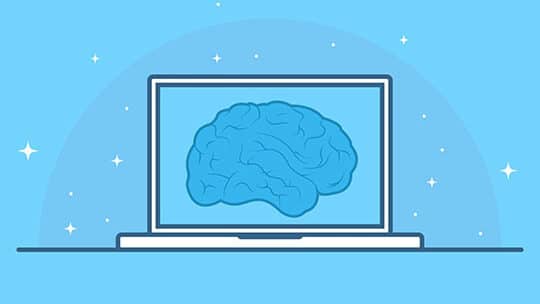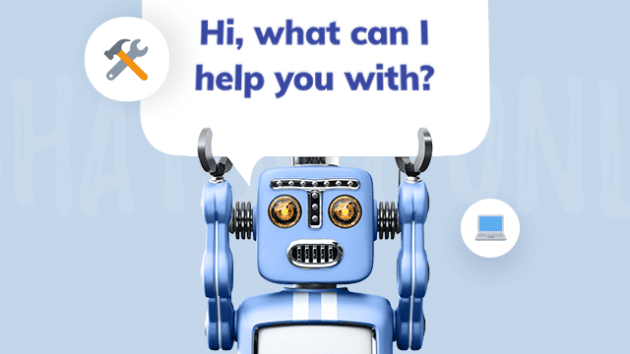In these times, when advancement has taken the front seat, Artificial Intelligence is making the most of opportunities.
When we looked at the global AI market, it could be known that its market size was rising at the Compounded Annual Growth Rate of 38.1% from 2022 to 2030.
As surveyed in 2021, the global AI market was valued at US$ 87.04 billion and would encounter increased demand across different sectors such as BFSI, automotive, healthcare, and more.
The growing use of parallel computing in AI data centers, greater data traffic, and expanding acceptance of cloud machine learning platforms spanning multiple application industries are the key drivers of such a surge in AI demand in recent and coming years.
Additionally, global hardware cost reductions are boosting overall industry development. One of the other essential elements driving market expansion is the increasing number of partnerships and collaborations undertaken by various major firms. Furthermore, the growing emphasis on developing human-aware AI systems is projected to generate profitable potential for the AI infrastructure industry in the coming years.
Machine learning (ML) and artificial intelligence (AI) are in high demand. As a result, the community has grown, resulting in the invention of various AI frameworks that simplify learning AI. This post will go through some of the greatest frameworks for getting started with AI programming and helping to improve business efficiency.

Best AI frameworks and tools to Look Out
Now let’s discuss all these AI frameworks and tools in detail to know more about them and find the reason why these frameworks and tools are the best.
Recommended for you: What is the Role of Artificial Intelligence (AI) in Cybersecurity?
1. TensorFlow
TensorFlow is a scalable multi-programming interface with powerful growth drivers that enables simple programming. It has a large open-source ecosystem and provides extensive and detailed documentation.
Being regarded as an excellent method for developing statistical programs, it also allows for distributed training. Herein, machine models may be taught at any level of abstraction as required by the user in an effective format.
The Proponents:
Tensor flow uses the popular Python programming language, and has a lot of processing power. And thus, it may be used with any CPU or GPU. Also, the computational graph abstraction could be used with TensorFlow to develop different machine models.
The Challenges:
The framework routes the incoming data via numerous nodes to generate a judgment or prediction, which might consume some time. It also lacks AI pre-trained models.
2. Microsoft CNTK
Microsoft CNTK is a more adaptable and faster open-source neural network-based framework that enables text, message, and voice reformation. Its efficient scaling environment delivers overall evaluation faster of machine models while retaining data integrity.
This dynamic framework features integrations with major data sets, making it the best choice for adoption by significant firms like Skype, Cortana, and others, as well as a highly expressive and user-friendly design.
It’s a highly optimized framework with productivity, scalability, performance, and high-level integrations. Microsoft CNTK has its own network that may be efficiently represented, such as comprehensive APIs, both high-level and low-level.
Furthermore, it has built-in components, including RNN, hyperparameter tuning, supervised learning models, reinforcement, CNN, etc., and resources that promote maximum efficiency.
The Proponents:
Because it supports Python and C++, Microsoft CNTK can work with a number of servers at once to speed up the learning process. Developed with the latest advancements in AI, the architecture of Microsoft CNTK supports GAN, RNN, and CNN. Furthermore, it enables dispersed training to successfully train machine models.
The Challenges:
It is missing a visualization board as well as mobile ARM compatibility.

3. Caffe
Caffe is a deep learning network preloaded with a set of trained neural networks. If you have a tight deadline, this should be your prime option. This framework is popular for its image-processing capabilities, but it also supports MATLAB extensively.
Caffe models are created entirely in plaintext schemas. It not only has an active open-source community for debate and collaborative coding, but it also gives incredible speed and efficiency because it is preloaded.
The Proponents:
It interconnects C, C++, and Python, and it also allows CNN (convolutional neural networks) modeling. Caffe surpasses excellence when performing quantitative jobs owing to its speed or time-saving capabilities.
The Challenges:
Caffe cannot handle complex data but is relatively fast when it comes to image visual processing.
4. Theano
This framework promotes deep learning research and is dedicated to providing reliability for networks that demand high processing capabilities by utilizing GPUs rather than CPUs. Multidimensional array computation, for instance, necessitates a significant amount of power, which Theano possesses. Theano is a popular programming language based on Python and is recognized for speedy processing and response.
Theano’s dynamic code generation enables faster expression evaluation. Furthermore, even when the numbers are small, it provides an excellent accuracy ratio. Another key feature of Theano is unit testing, which enables users to self-verify their code and easily detect and resolve errors.
The Proponents:
Theano provides solid assistance for all data-intensive apps, although it must be combined with additional libraries. It is also precisely optimized for both the CPU and the GPU.
The Challenges:
There are no more upgrades or feature additions expected to the latest iteration of Theano.

5. Amazon machine learning
Amazon machine learning provides high-end assistance in the development of self-learning technologies. This platform already has a user base in its many services such as AWS, S3, and Amazon Redshift. This is an Amazon-managed service that performs three operations on the model: data analysis, model training, and model assessment.
In AWS, one can find tools for every level of experience, be it a newbie, data scientist, or developer. Because security is paramount, this product includes full data encryption. Aside from that, it provides broad tools for data analysis and understanding, as well as access to all important databases.
The Proponent:
With this framework, you don’t have to write a lot of code, instead, it allows you to communicate with the AI-powered framework using APIs. Amazon Machine Learning is highly considered by data scientists, developers, and machine learning researchers.
The Challenges:
It lacks flexibility because the entire system is abstracted, thus you can’t pick a specific normalization or machine learning approach. When it comes to data visualization, Amazon’s machine learning falls short.
You may like: Data Science vs. Artificial Intelligence – What are the Differences?
6. SCIKIT LEARN
Scikit-learn is a reliable robust machine-learning library in Python. It is the foundation of many supervised and unsupervised learning computations. Precedents include direct and calculated relapses, bunching, decision trees, and k-implies.
Until you start implementing increasingly advanced calculations, Scikit-learn is a more-than-adequate tool to work with if you’re just starting with machine learning. It offers a wide range of calculations for popular AI and data mining applications including bunching, relapsing, and order.
Even complicated activities, like modifying data, defining features, and employing ensemble techniques, may be done in a few lines. Furthermore, it is based on NumPy and SciPy, two essential Python modules.
The Proponents:
The library is offered under the BSD license, which means it is free with just minor legal and licensing constraints. Not only is it simple to use, but the scikit-learn package is extremely adaptable and useful for real-world applications. You can witness its uses across different cases such as consumer behavior prediction, neuroimage generation, and so forth.
Scikit-Learn is backed by a large worldwide online community support, authors, and experienced collaborators. For customers that wish to connect the algorithms with their own platforms, the scikit-learn website includes extensive API documentation.
The Challenges:
It is not a suitable option for in-depth or in-detail study.

7. KERAS
If you favor the Python way of doing activities, Keras works best for you. Keras has a high-level neural network library that runs on Theano or TensorFlow. It is a multi-backend and multi-platform application that focuses beautifully on user experience and enables quick prototyping. Aside from that, it also supports Convolutional and Recurrent networks.
Keras is simple to debug and explore because it is a Python-based framework. Keras is expressive, adaptable, and well-suited to exploratory research. It was created to allow for quick experimentation, and it also includes a highly modular neural network library built in Python.
The Proponents:
This framework reduces the number of user steps required for common-use scenarios. Being a straightforward and consistent interface, Keras enables you to create bespoke building blocks to communicate fresh research ideas. It provides quick and easy prototyping, while also creating new layers, measurements, and cutting-edge models.
The Challenges:
As this framework uses No RBM (Restricted Boltzmann Machines), it is a less flexible and more sophisticated framework. There are fewer projects that are available online than TensorFlow Multi-GPU, and they are not fully functional.
8. MXNET
It employs a forgetful backdrop to exchange computation time for memory, which may be particularly best for recurrent nets on very long sequences. MXNet is another well-known Deep Learning framework. MXNet, which was founded by the Apache Software Foundation, supports a broad range of languages such as JavaScript, Python, and C++.
Amazon Web Services also helps MXNet develop deep-learning models. Unlike practically all other major frameworks, it is not expressly governed by a large enterprise which is considered a good feature for a community-developed framework. MXNET supports TVM, which improves deployment compatibility and allows for the usage of a wider range of additional device types.
The Proponents:
The model serving in MXNET is simple while the API is fast. This framework not only supports GPU but also has a multi-GPU mode. It is an effective, scalable, and quick framework that supports different programming languages such as Scala, R, Python, C++, and JavaScript.
The Challenges:
MXNet has a comparatively smaller open-source community compared to TensorFlow. Such a lack of significant community support speaks for a longer implementation time when it’s about improvements, bug fixes, and other enhancements. MxNet, although widely utilized by various firms in the IT industry, is not as well-known as Tensorflow.

9. PYTORCH
PyTorch is an artificial intelligence system created by Facebook and its source code is available on GitHub, where top professionals are using it. It has received traction and a lot of favorable feedback.
The Proponents:
PyTorch is simple to understand, even simpler to code, and with utmost compatibility with cloud platforms. It has a comprehensive set of robust APIs for extending the Pytorch Libraries for being more adaptable, speedier, and optimization-friendly. At runtime, it supports computational graphs, while also supporting both GPU and CPU. Moreover, Python’s IDE and debugging tools make it simple to debug.
The Challenges:
With the release year of 2016, PyTorch stands newer than others, has fewer users, and is not generally recognized. There is a lack of monitoring and visualization tools, such as a tensor board. Also, when compared with other frameworks, the developer community associated with this framework is still modest.
You may also like: How to Implement Artificial Intelligence (AI) in Your SEO Strategy?
The next step for you!

These 9 AI frameworks and tools listed could help businessmen, engineers, and scientists like you confront real-world problems, therefore developing and reinforcing the core technology. As we can see, all these tools have their own distinct features, sets of advantages, and challenges as well. You may take up these AI frameworks and tools as per the feature-suitability demanded by your business model or project goal.
The very next step after understanding the characteristics, pros, and cons of these listed AI Frameworks and Tools is that – you must implement one straight away to achieve the ideal performance with a competitive edge over others.
This article is written by Heena Soni. Heena is an avid researcher and writer at TRooTech.com, a Technology Company working on digitalizing industry processes for varied domains. Being a part of the content management team, she is enthusiastic about advanced technology and likes to be updated on the latest know-how of technology. You can follow her on LinkedIn.
 This article is written by Heena Soni. Heena is an avid researcher and writer at
This article is written by Heena Soni. Heena is an avid researcher and writer at 





